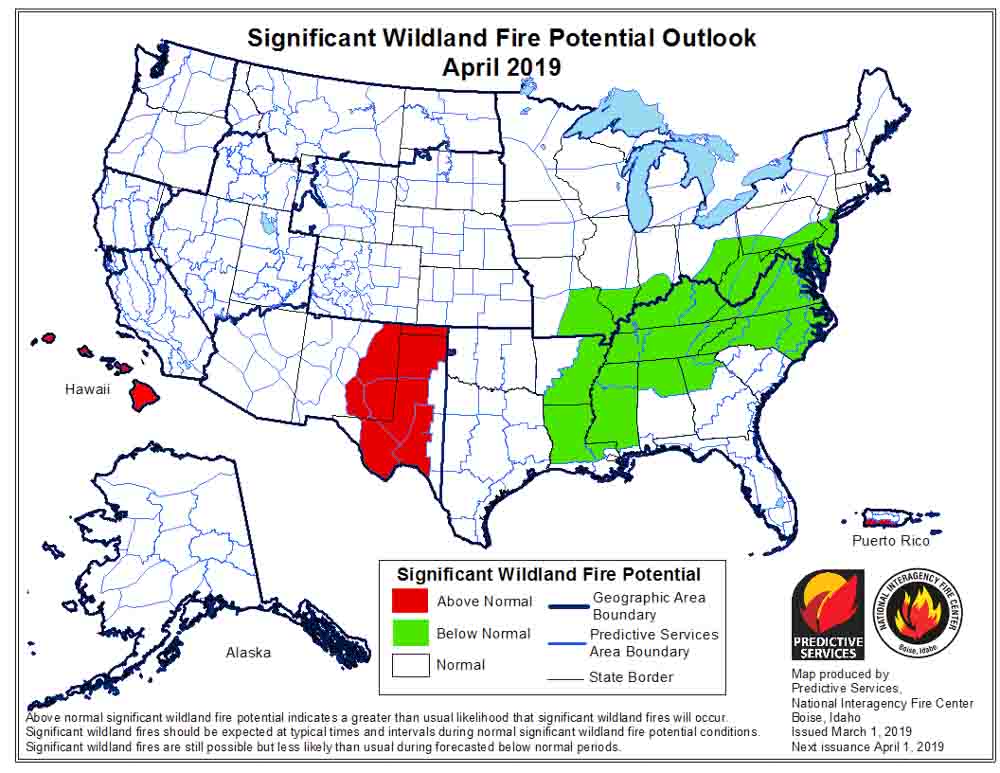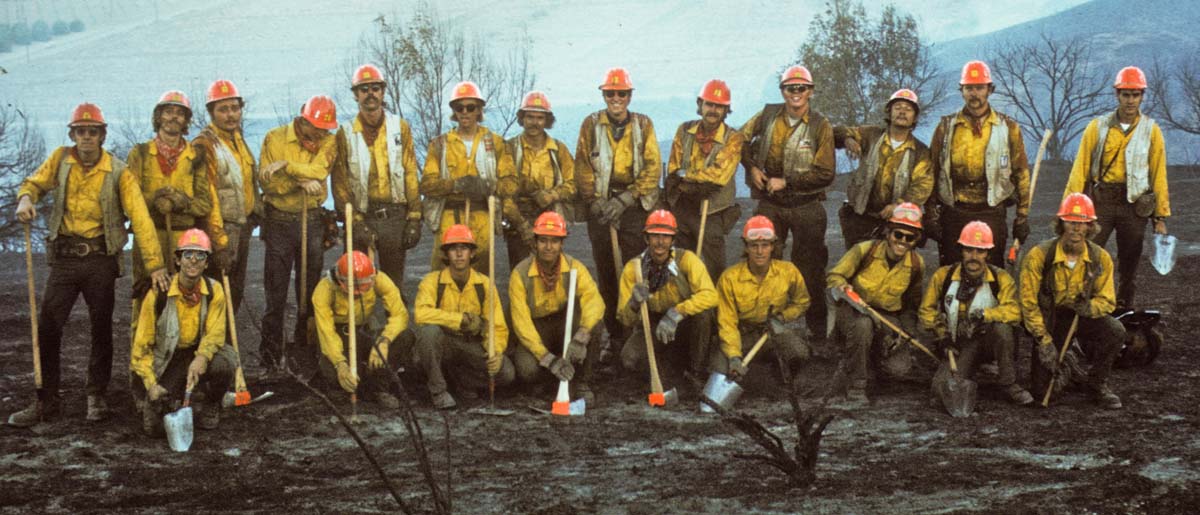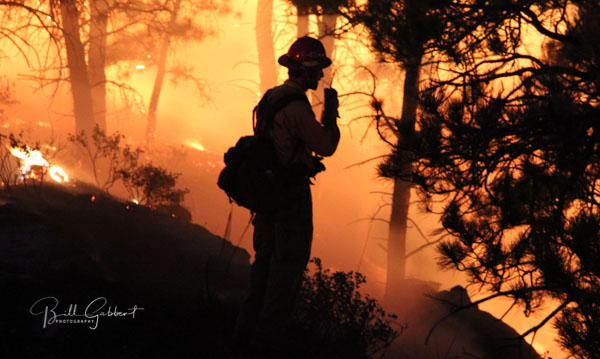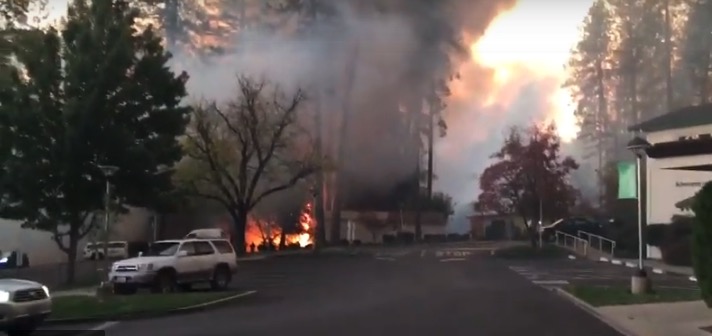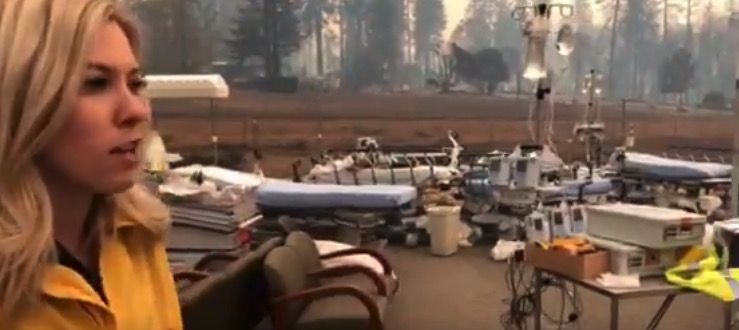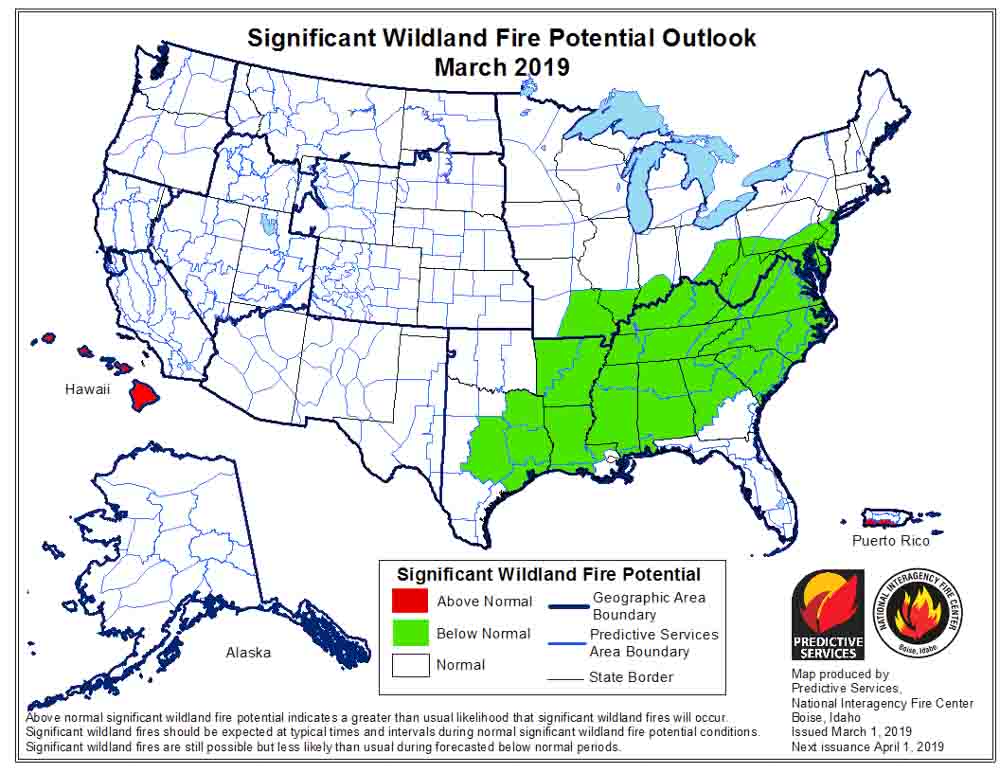 On March 1 the Predictive Services section at the National Interagency Fire Center issued their Wildland Fire Potential Outlook for March through June. The data represents the cumulative forecasts of the ten Geographic Area Predictive Services Units and the National Predictive Services Unit.
On March 1 the Predictive Services section at the National Interagency Fire Center issued their Wildland Fire Potential Outlook for March through June. The data represents the cumulative forecasts of the ten Geographic Area Predictive Services Units and the National Predictive Services Unit.
If NIFC’s analysis is correct, in April wildfire activity should begin to increase in Eastern New Mexico and Western Texas. In May it will transition to the greater Grand Canyon area, with much of California added in June.
Below:
- An excerpt from the NIFC narrative report for the next several months;
- More of NIFC’s monthly graphical outlooks;
- NOAA’s three-month temperature and precipitation forecasts; and,
- Drought Monitor.
The majority of the nation remained out of fire season in February. The minimal fire activity observed continued to be well below average nation-wide. What was observed was minimal and limited mainly to the western fringes of the Southern Area. While a weak El Niño persisted, resulting weather conditions were atypical to what is often observed during such events. Precipitation was generally near to above average in most locations except for two regions. The central and southern Great Plains were especially dry, and the Deep South had pockets of dry conditions as well. Portions of West Texas and eastern New Mexico received less than 5% of average precipitation. Overall, the Deep South fared better but portions of the Carolinas and the lower Mississippi River Valley recorded below average precipitation.
Temperatures were generally within about 3 degrees of average across the country. A slight cold bias existed in the West and across the northern tier. A slight warm bias existed across the South and Texas. Extreme departures from average were observed across the northern Great Plains where temperatures were as much as 25 degrees below average.
The frequency and strength of Pacific weather systems moving on shore and across the West allowed for above average precipitation to reduce the severity and scope of the ongoing drought across California and portions of Oregon and the Great Basin. Incredible amounts of snowfall intermittently shut down travel across the High Sierra in California. Soil moisture levels improved across most areas except western Oregon where the persistent dry conditions continued.
March is a transition month. Pregreenup grassfire activity is not uncommon along and east of the Rocky Mountain Front. At least average activity is expected until green up takes hold. Concerns decrease west of the Continental Divide where sustained periods of wet and cold conditions have persisted the past few months. As greenup takes hold in April, most areas experiencing preseason activity should begin to see a decrease except for the Southwest where the drying of fuels begins to show a gradual westward migration of fire activity.
Fire activity in May and June should increase in coverage and intensity across the Southwest and California. Some slight expansion of activity into the southern Great Basin is also expected. The above average precipitation received during the late winter and early spring months could translate to another above average grass crop that could prove to be problematic in June.

